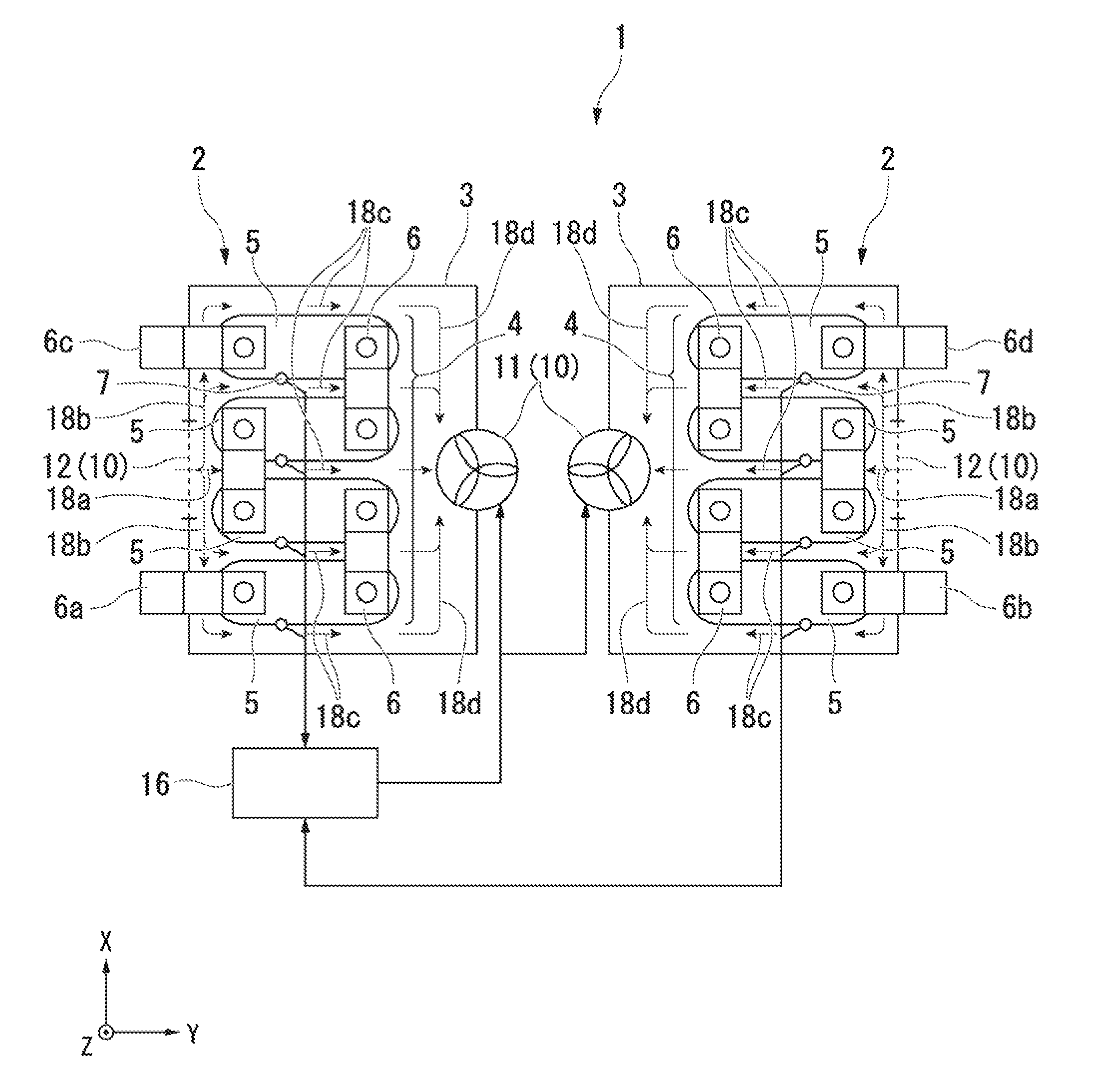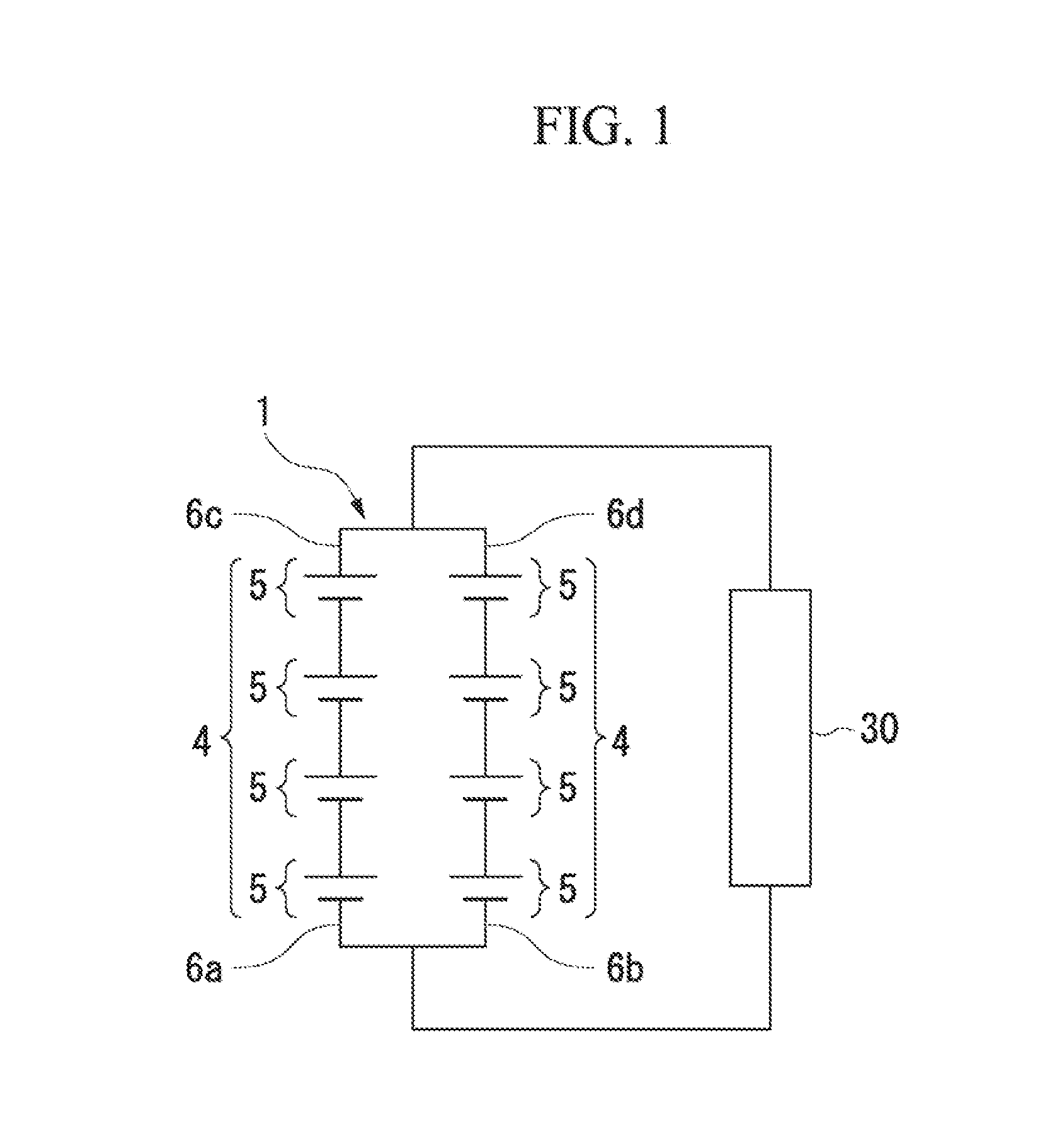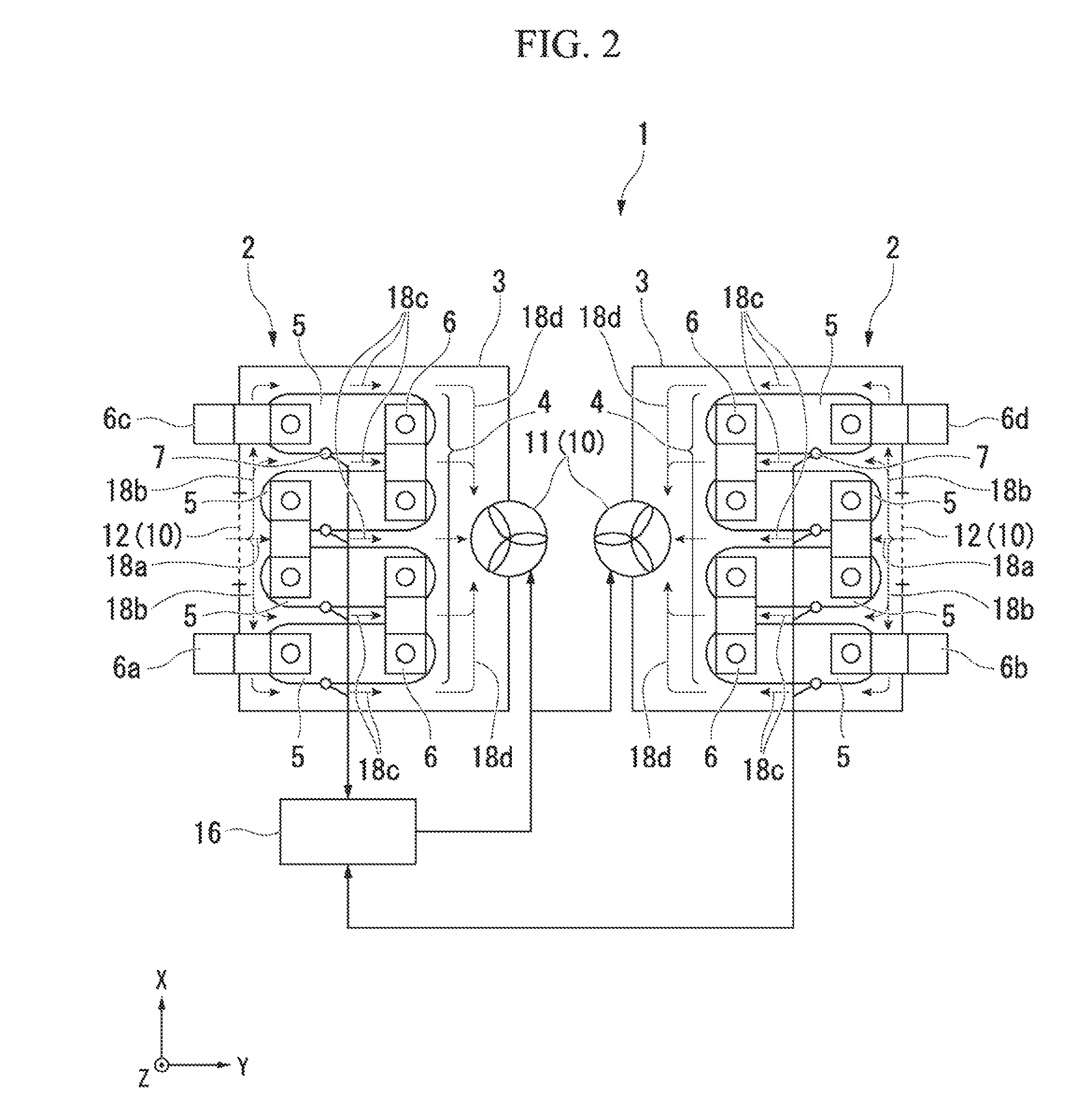Battery assembly
a battery and assembly technology, applied in secondary cells, electrical equipment, cell structural combinations, etc., can solve the problems of insufficient ratio of normal battery cells and insufficient reflection of high temperature of battery cells, and achieve the effect of simple cooling structure and extended battery system li
- Summary
- Abstract
- Description
- Claims
- Application Information
AI Technical Summary
Benefits of technology
Problems solved by technology
Method used
Image
Examples
first embodiment
[0023]FIG. 1 is a connection example of an battery system according to a first embodiment of the present invention. FIG. 2 is a configuration diagram of the battery system 1 shown in FIG. 1. FIG. 3 is a diagram illustrating a correlation between a degradation rate and a temperature of a common battery. In the embodiment, an example of the battery system with a plurality of battery units 2 will be described. However, the battery system described in the present invention may include one or more battery units 2.
[0024]As shown in FIGS. 1 and 2, the battery system 1 of the embodiment includes two battery units 2. Each battery unit 2 includes: a plurality of arms 4 which are formed by electrically connected respective battery cells 5 in series to each other through a bulbar 6; a plurality of battery cases 3 which are provided so as to accommodate each of corresponding arm 4; and a plurality of cooling units 10 which are provided to each of battery cases 3. Further, the battery system 1 is...
second embodiment
[0043]FIG. 4 is a connection example of an battery system according to a second embodiment of the present invention. Further, FIG. 5 is a configuration diagram of the battery system 1 shown in FIG. 4. As shown in FIGS. 4 and 5, the battery system 1 of the embodiment includes one or more battery units 2. The battery unit 2 includes: two arms 4 which are formed by electrically connected the plurality of battery cells 5 in series to each other through the busbar 6; the battery case 3 which accommodates the arm 4; and the cooling unit 10 which is provided to the battery case 3.
[0044]In the embodiment, the arms 4 are electrically connected in series to each other so that the busbars 6b and 6c with different polarities are connected to each other. Further, in the embodiment, the cooling unit 10 includes the fan 11 which exhausts the air inside the battery case 3 to the outside; the intake exhaust port 12 which feeds and exhausts the air between the inside and the outside of the battery ca...
modified example
[0057]The technical scope of the present invention is not limited to the above-described embodiments, and the respective embodiments may be appropriately combined with each other. That is, various modifications may be made without departing from the spirit of the invention. Hereinafter, a modified example of the embodiment is illustrated. FIG. 6 is a diagram illustrating the modified example according to the first embodiment. In FIG. 6, the same reference numerals are applied to the same configuration as that of the first embodiment, and the description thereof will be appropriately omitted. The modified example and the first embodiment are different from each other in the position and the number of the intake exhaust ports.
[0058]In the first embodiment, one intake exhaust port 12 is provided for each battery unit 2, but in the modified example, the intake exhaust ports 17 are provided in numbers equal to the number of passageways 18c. More specifically, as shown in FIG. 6, five pas...
PUM
| Property | Measurement | Unit |
|---|---|---|
| arbitrary angle | aaaaa | aaaaa |
| temperature | aaaaa | aaaaa |
| temperature | aaaaa | aaaaa |
Abstract
Description
Claims
Application Information
 Login to View More
Login to View More - R&D
- Intellectual Property
- Life Sciences
- Materials
- Tech Scout
- Unparalleled Data Quality
- Higher Quality Content
- 60% Fewer Hallucinations
Browse by: Latest US Patents, China's latest patents, Technical Efficacy Thesaurus, Application Domain, Technology Topic, Popular Technical Reports.
© 2025 PatSnap. All rights reserved.Legal|Privacy policy|Modern Slavery Act Transparency Statement|Sitemap|About US| Contact US: help@patsnap.com



